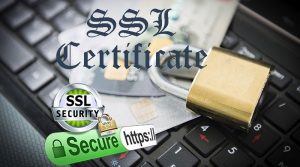Steps to Install SSL on IIS 8
SSL Certificate installation and the CSR code generation, on IIS 7, should be done using the Internet Services Manager.
- Start Internet Information Services (IIS) Manager
- Double-click on Server Certificates icon on the Home page.
- Hover the mouse to the Actions panel on the right side of the window and click “Complete Certificate Request…” button.
- Specify Certificate Authority Response contains 3 fields for modifying
- File name containing the certification authority’s response – browse through the file system to the certificate file which you have received from the certificate authority. Usually, its name looks like in this example: mydomainname_com.cer
- Friendly name – this field helps the server administrator to easily locate a particular certificate. As an example, a domain name of the certificate can be specified in this field.
- Select a certificate store for the new certificate – choose Personal from the drop-down menu.
- After the fields are set properly, click OK button.
- The certificate is uploaded to the server and should appear in the storage now.
- The next step is to create a binding which allows to access the website via HTTPS.
- Hover the mouse to the Connections panel on the left side of IIS Manager and select a website from Sites subfolder.
- Navigate back to Actions panel on the right side of the window and click Bindings button.
- Click Add… button on the Site Bindings screen.
- Modify the following fields in the Add Site Binding window:
- Type – select “https” from the drop-down menu.
- IP address – choose the IP address or “All Unassigned”.
- Port – specify the port number for a secure connection. The default port number is 443.
- SSL certificate – select the corresponding certificate by the previously specified Friendly name.
- When the fields are set up, click OK button.
- As a result, a new record should appear in the Site Bindings dialog window.


